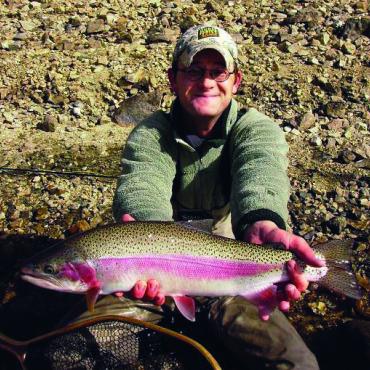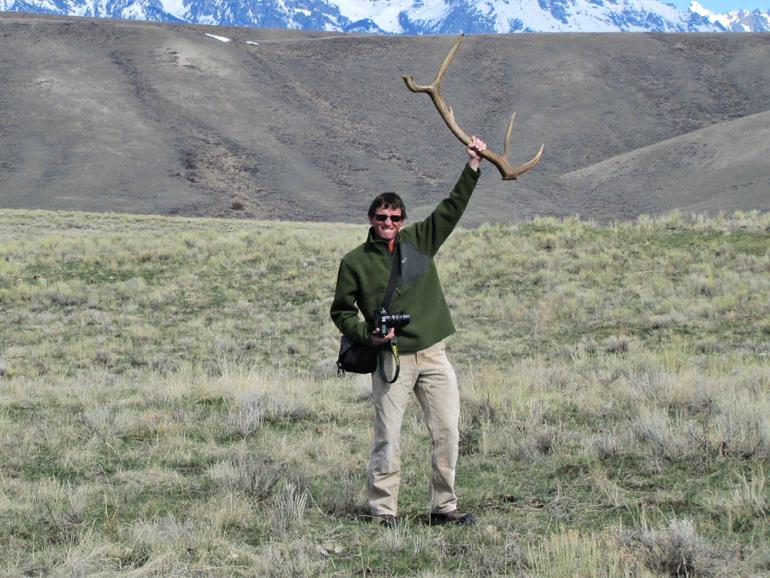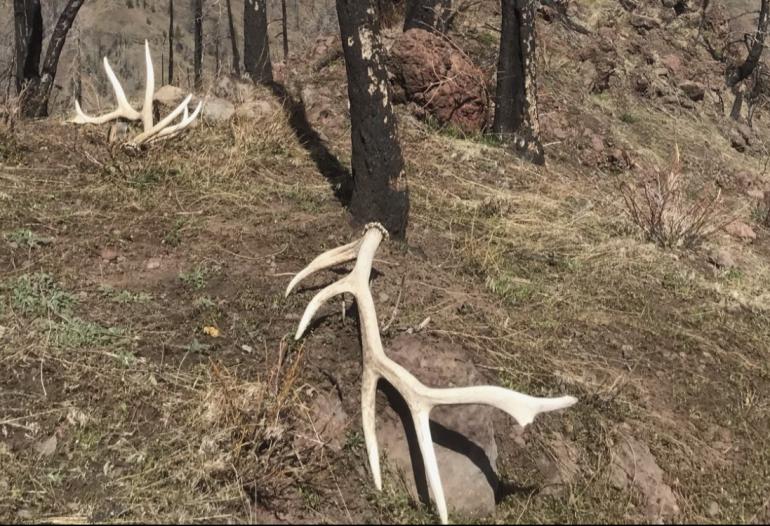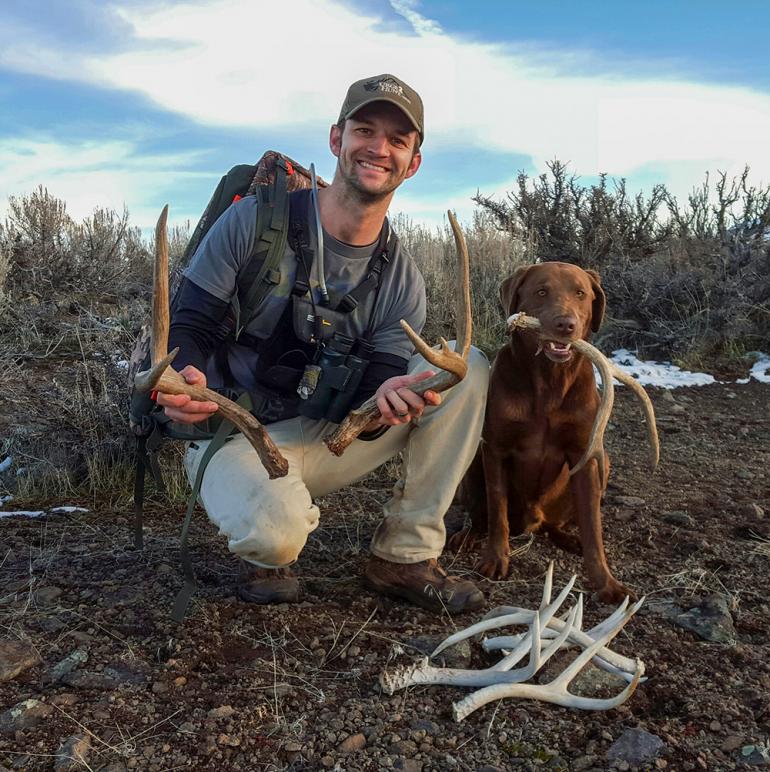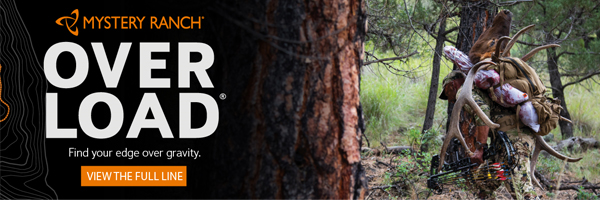O/B Hit List: Shed Hunting
Searching for sheds in the sticks.
There’s one spring season hunt in Southwest Montana that doesn’t require a license, a weapon, or much patience. The quarry for this outing isn’t even edible (unless you happen to be a dog), so culinary skills aren’t necessary either. The only things necessary for this hunt are the desire to get off the couch, a good pair of hiking boots, and the ability to spot things that are only slightly out of place. This hunt is more akin to finding plastic eggs filled with jellybeans, as opposed to more carnal types of hunts where the goal is filling the freezer; antlers, however, are still on the menu.
That’s right—we’re talking shed hunting. Every spring, male elk, deer, and moose drop their previous year’s headgear to allow for the growth of a new set. These shed antlers, or sheds, fall to the ground, and that’s where this hunt begins.
Who: Shed hunting is a fantastic outdoor activity for anyone, though little kids happen to be really good at it since they’re closer to the ground and are naturally curious about things directly in front of them. Anyone willing to venture off-trail and perfect the art of the mosey is likely to be a successful antler-picker, too. Some people—like hunters pre-season-scouting for big boss bulls and bucks—take shed hunting to another level entirely. On the other hand, some people are actively looking to make a buck (so to speak) since there’s a market for antlers. Most shed hunters fall somewhere in between these groups, but all bone-pickers are folks looking for any excuse to get outside.
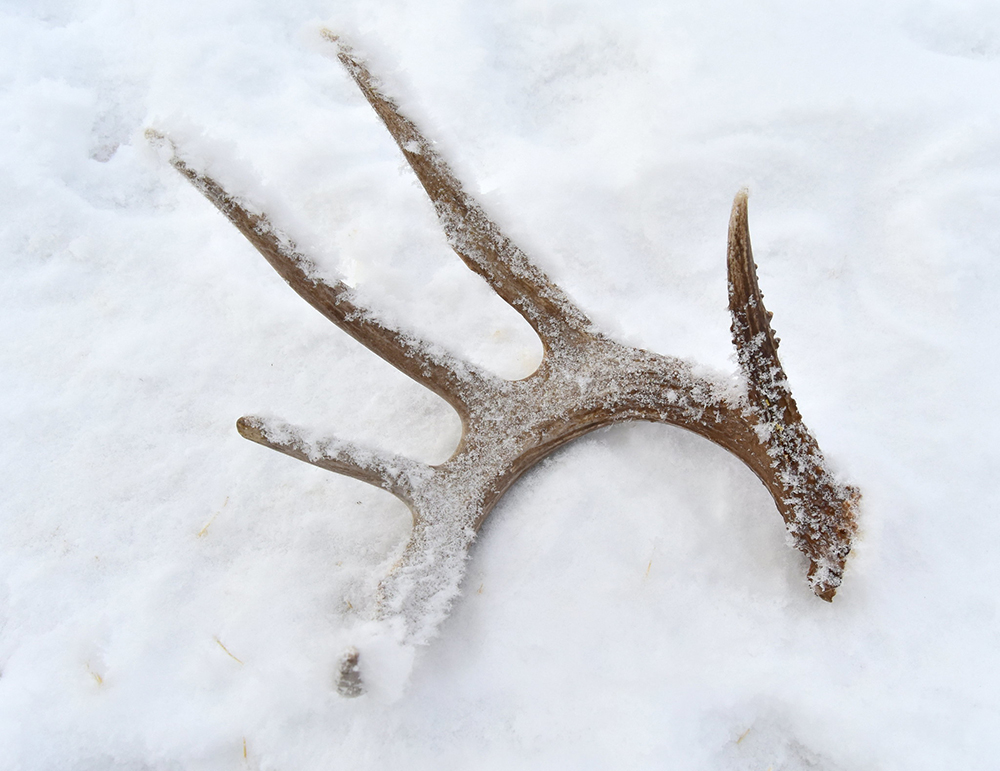
What: Antlers—that’s what. Here are the facts. In southwest Montana, we have four species of the Cervidae family: elk, moose, whitetail deer, and mule deer. The male specimens of these species grow and cast their antlers annually. Antlers are made of the bone that grows from the pedicle on the animal’s skull, one on each side. When antlers are in the velvet phase, they can grow up to an inch a day, making antlers one of the fastest-growing animal tissues in the world.
What are sheds good for? Humans use their antler finds for a variety of uses: knife handles, chandeliers, mantlepieces, dog chews—the only limit is your imagination. In some Eastern cultures, ground antler is regarded as a powerful libido booster—bone for the boner, if you will. In nature, rodents often gnaw on sheds because of the high levels of calcium and other essential minerals. And, as previously mentioned, high-quality sheds can fetch a hefty sum depending on the market; still, unless you're a veteran shedder, don’t expect to gather enough in a season to pay for a six-pack of fancy beer.
When: Prime shed-hunting season usually runs from mid-March through early June, though it’s common to find sheds almost any time of year. But the best time to start hunting sheds is as soon as the snow begins to recede, or earlier if you happen to have knowledge of an area where animals frequently congregate. Pay close attention to the critters in your antler-hunting area.
There are a lot of factors that cause antlers to pop off—nutrition, age, injury, etc.—but paramount among these is a thing called photoperiod, aka, day length. When the days get longer, male Cervidae ramp up their production of testosterone, which spurs antler growth. These budding antlers will often be the thing that causes last year’s set to be cast off.
During the spring months, keep an eye out for elk, deer, or moose with scabby-looking patches where the antlers should be; if these patches look like a freshly skinned knee, or an elbow with road rash, chances are there's a prize set of sheds in the area. It’s also important to keep in mind that some species hold onto their antlers longer than others: deer tend to shed the earliest, followed by moose, then elk.
Where: Large private ranches owned by media tycoons are prime antler hunting spots, second only to Yellowstone National Park. However, if you don’t feel like spending the rest of your life braiding horsehair in Deer Lodge, there are plenty of legal options on our public lands. BLM, Forest Service, and numerous state lands and WMAs—these are all solid options for the prospective antler-hunter.
It’s important to keep in mind that some public lands are closed to antler-picking during certain times of the year; these closures are in place to provide the antler-bearing critters and their mates a period of rest in order to stock up on calories lost during a long winter, and to provide a healthy crop of young for the coming years. (For a list of these closures, visit fwp.mt.gov.) If you’re eyeing a piece of private land, always get permission well in advance, be respectful and polite, and be willing to take "no" for an answer.
Don’t be afraid to log some off-trail miles—concentrate your antler hunting on areas where animals are known to frequent. Likely spots to find sheds are water sources, mineral licks, and game trails with lots of low-hanging limbs. Hunt sheds as if you were hunting the bull or buck they were attached to. Find a good lookout or sunny rock and spend some time behind the binos. Also utilize the technology in your pocket—many companies offer smart-phone apps that highlight public and private land, and Google Earth is a great tool for getting the lay of the land as well as an idea of topography.
Why: Because antlers tend to grab attention, from a single majestic six point on the fireplace mantle, to the DIY knife handle that you only use to open junk mail, to a lichen-covered forky in the flower bed. Because antlers have a story—the story of the picker and the memories made, and the unknown story of the beast that carried it, grew it, and fought with it. Because why not? Why not have a little mystery, a small token of the unknown, or at the very least something for your lab to chew on besides your slippers.
Editor's note: Although it's mentioned in the "Where" section, it bears repeating here: be conscious of the stress you're causing wildlife. Spring is when they recover from a long, hard winter and they don't need any more adversity right now. If there are other shed-hunters at your spot, go somewhere else. Don't push animals too hard. When in doubt, wait it out – let the deer and elk wander off on their own before you charge in to get that shed.

